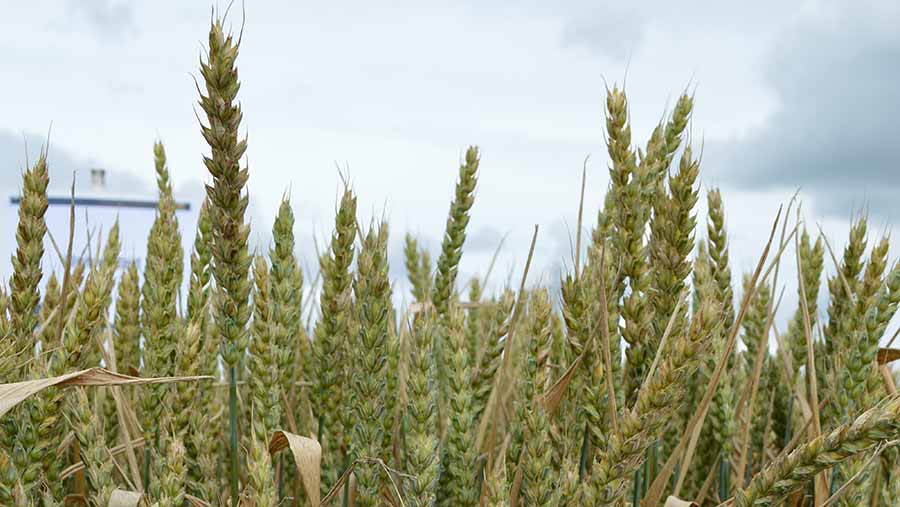Septoria tools in pipeline to ‘tailor’ disease management

An in-field test to detect which strains of septoria are present in a wheat crop is one of several tools in development that could be aiding disease management decisions on farms in just a few years from now.
Named “SeptRe”, the test analyses samples of septoria lesions and gives a result in about 30 minutes.
This information can be used to form the basis of a plan to manage the disease in the most effective way possible.
The three-year project, which is jointly being carried out by Fera and Agrii along with other groups, ends in March 2018 and is designed to influence product choice and dose to achieve optimum control for the septoria threat.
See also: Updated advice for controlling net blotch in barley
“It is getting the right product at the right dose and the right time, and the only way to know this is with this information,” explained Clare Bend, head of technology at agronomy group Agrii.
She noted that this test can also allow for the fine-tuning of rates up or down to make savings where appropriate.
In-season support
Another tool in the pipeline is a canopy sensing instrument that can predict the spread of septoria infection in a crop and the yield potential early on in the season, which could influence input decisions.
The instrument, named “Capture”, detects plant stresses that could be related to septoria by looking at about 700 different wavelengths, using hyper-spectrum signatures and fluorescence.
“It is based on image analysis to give a prediction of how [septoria] might spread later in the season,” said Agrii R&D projects co-ordinator Francesca Salinari. “This year will be the key test because it will be used to inform decision-making.”
Co-funded by Innovate UK, the three-and-a-half-year project is being run in conjunction with plant breeder RAGT and the University of Nottingham.
Prediction model
An advanced model for predicting when septoria infection has occurred is also being tried out. It combines public data, canopy sensing models, technical expertise and a fleet of 190 weather stations located in fields and orchards to obtain representative farm conditions.
The model helps calculate when the period of septoria infection without visible symptoms, termed the “latency period”, begins to allow for earlier disease treatment.
The information can be used to inform decisions made at the T1 and T2 fungicide application timings, explained Dr Salinari.
Latency period
“The latency period is important and is driven by rain and temperature. It means we will have the disease in the crop but we don’t see it. The latency period of septoria is long and can be up to four weeks,” she said.
“Our question was, can models help us tailor fungicide programmes against septoria. We observe when septoria is visible and this marks the point when the latency period is finished. Then we calculate backwards to see if the model gave us an early warning at the right time.”
The infected lower plant leaves provide inoculum that is spread to the flag leaf, where significant yield damage can be done if disease isn’t controlled effectively.
The low disease pressure of 2015 and the high disease pressure of 2014 were used as a reference for the model.
Dr Salinari said there were fewer rainy days in 2015 than in 2014 and the average temperature was lower, which lengthens the latency period, but she noted that this was very site specific.

